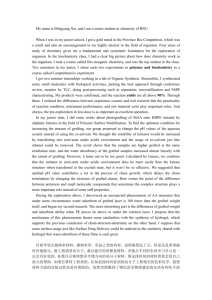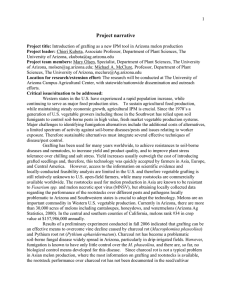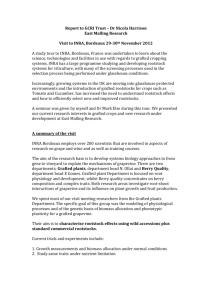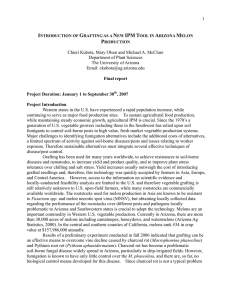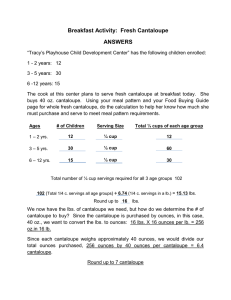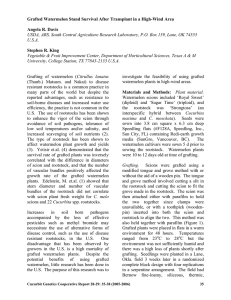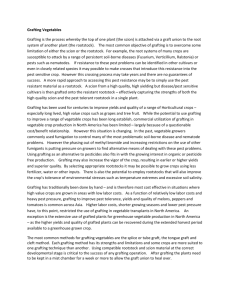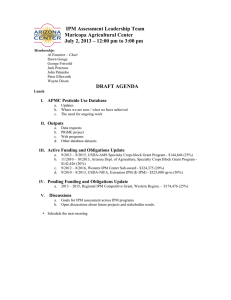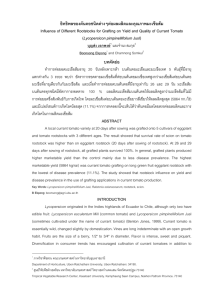Introduction of Grafting as a New IPM Tool in Arizona... LOGIC MODEL for PROGRAM DEVELOPMENT and ASSESSMENT OUTPUTS
advertisement
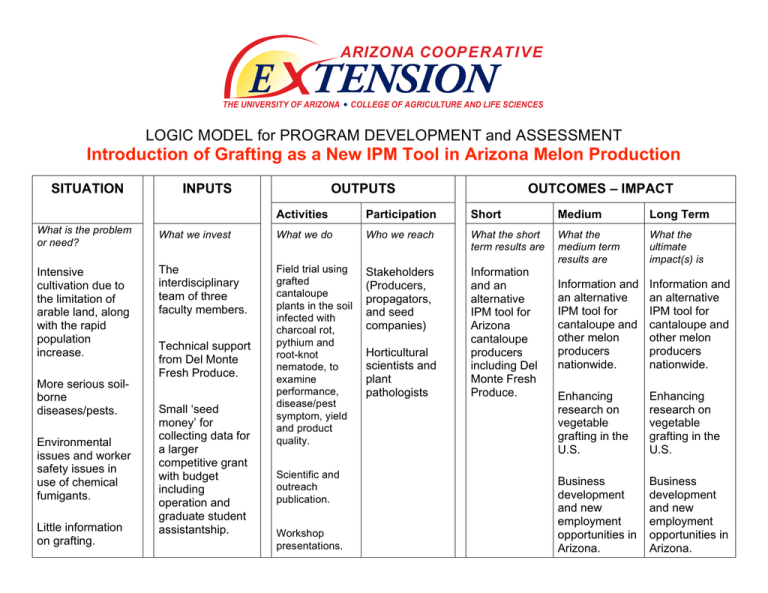
LOGIC MODEL for PROGRAM DEVELOPMENT and ASSESSMENT Introduction of Grafting as a New IPM Tool in Arizona Melon Production SITUATION INPUTS OUTPUTS OUTCOMES – IMPACT Activities Participation Short Medium Long Term What the medium term results are What the ultimate impact(s) is Information and an alternative IPM tool for cantaloupe and other melon producers nationwide. Information and an alternative IPM tool for cantaloupe and other melon producers nationwide. Enhancing research on vegetable grafting in the U.S. Enhancing research on vegetable grafting in the U.S. Business development and new employment opportunities in Arizona. Business development and new employment opportunities in Arizona. What is the problem or need? What we invest What we do Who we reach What the short term results are Intensive cultivation due to the limitation of arable land, along with the rapid population increase. The interdisciplinary team of three faculty members. Field trial using grafted cantaloupe plants in the soil infected with charcoal rot, pythium and root-knot nematode, to examine performance, disease/pest symptom, yield and product quality. Stakeholders (Producers, propagators, and seed companies) Information and an alternative IPM tool for Arizona cantaloupe producers including Del Monte Fresh Produce. More serious soilborne diseases/pests. Environmental issues and worker safety issues in use of chemical fumigants. Little information on grafting. Technical support from Del Monte Fresh Produce. Small ‘seed money’ for collecting data for a larger competitive grant with budget including operation and graduate student assistantship. Scientific and outreach publication. Workshop presentations. Horticultural scientists and plant pathologists Assumptions: (Beliefs, expectations, and principles that guide our work.) 1. Non grafted plants will exhibit a symptom of soil-borne disease in the non-fumigated field plot. 2. Non grafted plants will exhibit root-knot nematode (RKN) infection in the non-fumigated field plot infected by RKN. 3. 30 grafted seedlings will be produced in a timely fashion. 4. Del Monte Fresh Produce will be continuously cooperative with PIs in this project. 5. The selected rootstock (squash, C. moschata) exhibits resistance/tolerance over soil borne diseases/pests such as charcoal rot, Pythium and RKN and has good establishment in early March, as indicated in our fall trial and in the literature. 6. Cantaloupe plants grafted on the squash rootstock yield more than non-grafted cantaloupe plants. Environment: (Influential factors) 1. Weather conditions to create a distinct temperature difference between two timings of transplanting. 2. Availability of rootstock species, currently used experimentally in the U.S. [The seed company (American Takii) already agreed to provide the seeds for the experiment] 3. Increase of production capacity and supply of the grafted seedlings for open field use. 4. Continuous technology development and accumulation of locally collected data on using grafted seedlings in the U.S. open field.
